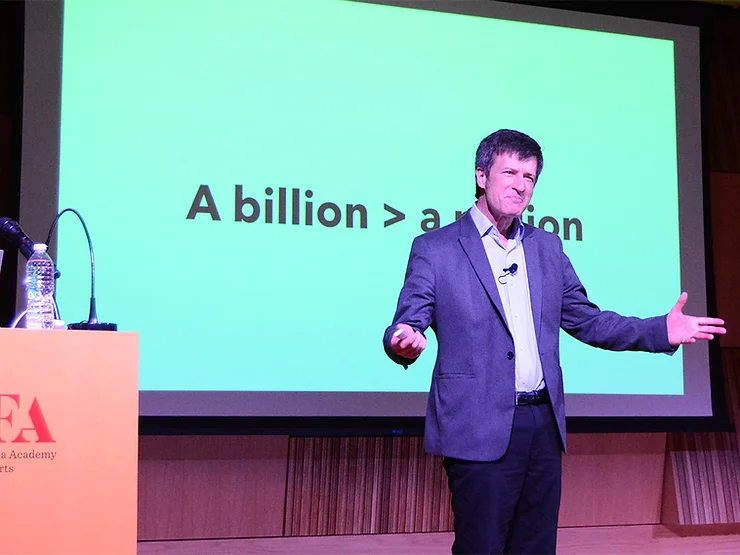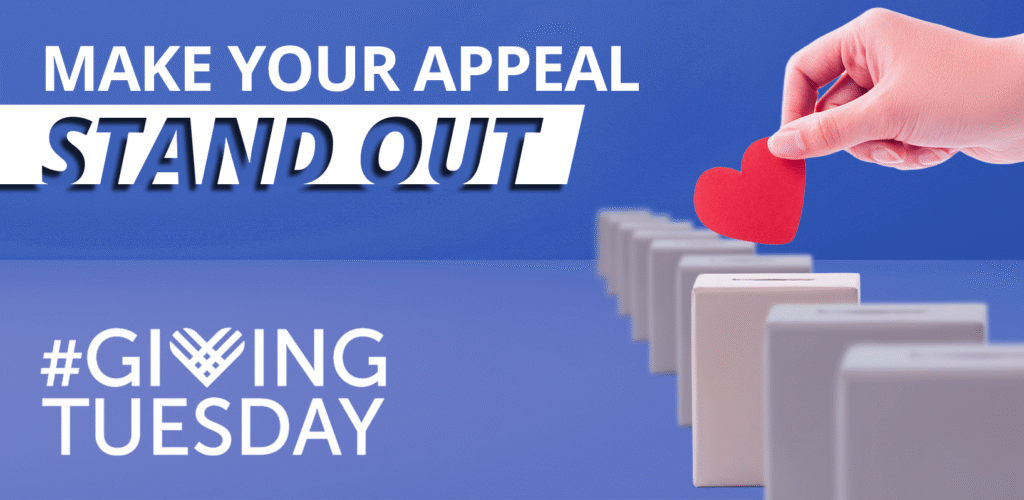Creative Manager Julia Wolf shares lessons from a recent workshop on how to make numbers more approachable.

Our brains are not wired for numbers.
If you think you’re a math whiz, you may argue that your brain is different. But you’d be surprised to know that the human brain is not built to comprehend numbers.
In fact, numbers are essentially a second language that most of us are not fluent in. The maximum number of items we can subitize — or perceive without counting — is about five. Anything beyond that is just considered “lots.”
And that information leaves me with lots of questions.
Recently, I attended an event hosted by the Arts + Business Council for Greater Philadelphia, where author and Stanford Graduate School of Business Professor Chip Heath broke down his techniques for making numbers more understandable. Using cues, processes, and emotion, we were able to take unfathomable numbers and break them down into layman’s terms.
In his book Making Numbers Count, Heath demonstrates many more tactics to communicate numbers. I found this book and his Speaker Series to be especially helpful in my work, as I often am tasked with creating infographics and making information look visually appealing. At Ceisler Media, we help clients with public relations, issue advocacy, and we help influence opinion and decisions in big cities and small towns throughout Pennsylvania.
Turning numbers into something we can recognize is a great way to make your statistic resonate with your audience. Two Microsoft scientists found this to be true in a study where they presented information as a raw number, then presented the same information with contextual phrases. The scientists learned that people grasped that “Pakistan is about the size of 2 California’s” much better than “Pakistan has an area of 340,000 square miles.”
The technique of using simple perspective cues not only helps people “get” what you’re trying to say, but it has also shown to double the retention rate of numbers.
Here are a few other helpful tips for better understanding numbers
Simplify fractions and round decimals. It’s much easier for someone to remember “about half our staff at Ceisler Media is women” than is to remember a fraction like 19/41. Using whole, concrete numbers is a great way to turn a decimal into a memorable statistic. For example, 0.48 or 48% of the world population uses social media, but you could simplify that by saying 1 out of 2 people use social media globally.
As long as these numbers are effective estimates, the rounded numbers result in less forgetfulness and errors.
Use emotion to help the statistics resonate. Florence Nightingale was able to significantly reduce disease-related mortality of British soldiers during the Crimean War by phrasing the data this way: “what should we feel if we were told that 1,100 men are annually doomed to death in our Army at home by causes which might be prevented?”

How we work with numbers
Every day as a creative, I work with numbers. I recently made some infographics for a solar client, and I regularly update a site with statistics on electricity suppliers. In fact, most of the number-based work I do has some influence on legislation. What resonated with me from Heath’s presentation is that it doesn’t matter how beautifully you are able to design the numbers — you have to make the numbers “stick”. I find that to be especially true working in media and issue advocacy.
Being able to translate numbers into something that people understand with immediacy is crucial in our work, and these principles will guide us in successfully communicating data with our clients.
Julia Wolf is the Creative Manager at Ceisler Media’s Philadelphia office.



